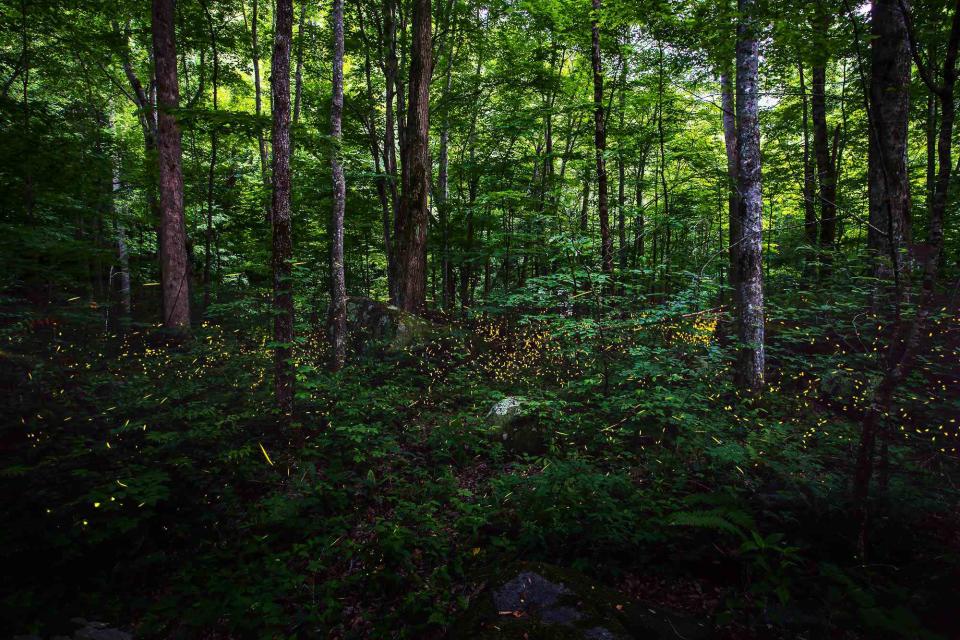Synchronous Fireflies Are Coming Back to the Great Smoky Mountains — and You Can Only See Them by Winning the Lottery
Every year, fireflies come together to put on one of nature’s most awe-inspiring shows.

Putt Sakdhnagool/Getty Images
There’s magic hiding in every corner of America’s national parks, but one particular natural event at the Great Smoky Mountains National Park may have them all beat. In fact, it’s so cool you need to literally win the lottery to see it.
Every year, the synchronous fireflies, a rare species of firefly, come together to put on one of Mother Nature’s most awe-inspiring shows. For two weeks, typically between mid-May to mid-June, the fireflies dance in harmony, lighting up the night sky in a dazzling display of teeny, tiny flashes. And it’s all in an effort to find their perfect mate, making the show all the more romantic.
“Firefly flash patterns are part of their mating display. Each species has a characteristic pattern that helps male and female individuals recognize and find each other,” the National Parks Service (NPS) explained. “Most species produce a greenish-yellow light, but others have more of a blue or white light. Males typically flash while they are flying, and females, which are usually stationary, flash in response.”
The production of the light, NPS said, is known as bioluminescence, a phenomenon also seen in everything from fungus to jellyfish.
“Bioluminescence involves highly efficient chemical reactions that result in the release of light with little or no emission of heat. Fireflies combine the chemical luciferin and oxygen with the enzyme luciferase in their lanterns (part of their abdomens) to make light,” NPS added.
As for why the fireflies all flash at once, the NPS said it’s so females know they are responding to “one of their kind,” as there are 19 different kinds of fireflies living in Great Smoky Mountains National Park.
Yes, this is one of the most extraordinary events on Earth, which means it’s also a wildly popular one. As such, the NPS limits the number of guests over the course of eight days to protect the insects, the park, and the experience in general. Luckily, you have just as good a shot of getting in as anyone else, as everyone must enter a lottery for tickets.
On April 25, the NPS will announce this year’s viewing dates. On April 28, it will open the lottery for vehicle passes at 10:00 a.m., and the lottery will close on May 1. On May 11, it will let all lottery entrants know if they were successful or not.
The lottery costs $1 to enter. Those who are successful will automatically be charged $24 for their parking permit, which the NPS said is “to help cover the cost of viewing supplies and nightly personnel to manage the viewing opportunity near Elkmont Campground.”
Learn more about the event and how to enter the lottery at nps.gov.
For more Travel & Leisure news, make sure to sign up for our newsletter!
Read the original article on Travel & Leisure.


